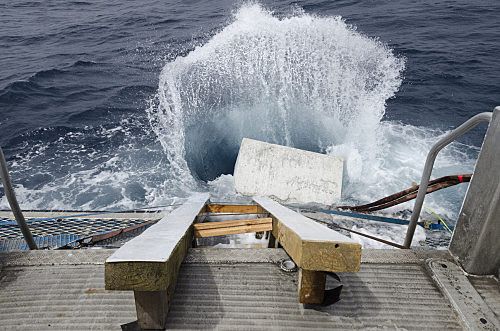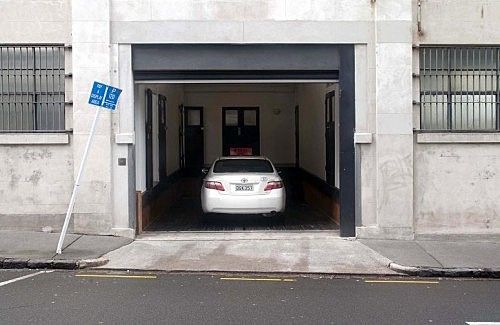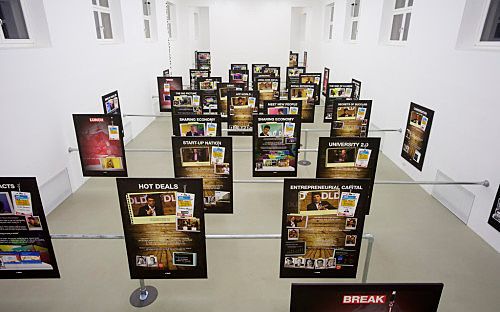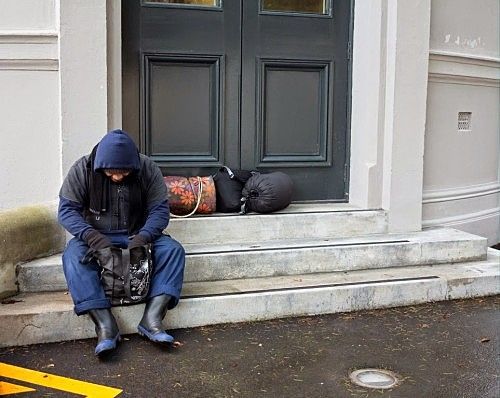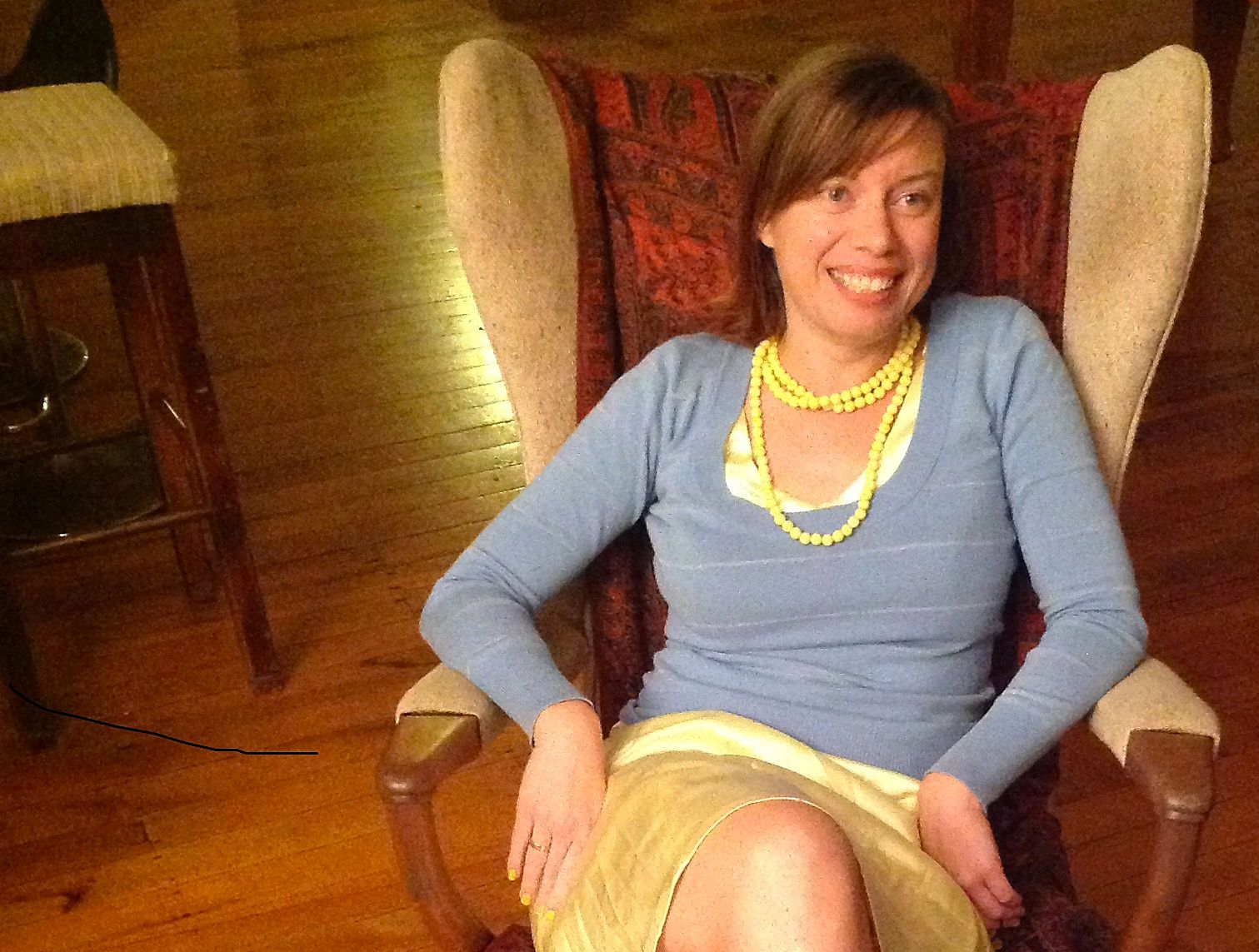The Walters Prize: This Year, Art is the Winner on the Day
Works that are mysterious, bold, and comments on real-world issues. Janet McAllister takes a look at this year's finalists for the Walters Prize.
As a collection, I really like this year’s Walters Prize show. I like its mystery, I like its boldness. All the works have in part been enabled by non-artists: families and professionals are allowing public invasion of home, or suffering the artist’s absence from home, or suffering art wank invasion of their beloved newspaper. I like that the works are in the real world, that they comment on real-world stuff: poverty, privilege, power. Money. I like their politics. I like that they challenge the art world. I am suspicious that the Walters Prize, accurately described as a bourgeois phenomenon, has come up with a host of strong, radical works. Is it allowed because art doesn’t actually change anything? Are our galleries full of pet paper tigers? I don’t believe that.
Let’s start with the art you can see right now, from the comfort of your own screen much better than you could ever see it in any gallery (Unless you count the Auckland Art Gallery and Govett Brewster gift shops. Browsing the catalogue for sale is the only place in the gallery you can see any of the original work. This is less Exit Through the Gift Shop and more Enter Through the Gift Shop and Stay There).
I liked the rumours of Maddie Leach’s work If you find the good oil let us know (Govett Brewster Gallery)better than its actual production. The rumours went: “oil, maybe it’s whale, she gets scientists involved, turns the oil into concrete, dumps it in the sea. Nothing in the gallery, but she publishes letters in the local paper. What is her art practice? No one knows.” My response went: “intriguing – experimental - evocations of environmental concerns; after all, what is ‘good’ oil off the coast of Taranaki? Oil drilled out or oil encased in concrete, left to dream with the fishes? – she’s not afraid of technology, this isn’t some primitive ‘return’ – Is Leach casting herself as Captain Ahab? – she’s demystifying industriaI back-office transactions – I like that the newspaper work is right under the citizens’ noses, they don’t have to go to the gallery to look or participate. Outreach for the people, yeah!” The Taranaki Daily News went up in my estimation for printing the letters of Leach and her friends, and for printing a spirited defence of their decision to do so in the face of public criticism (deputy editor Rob Mitchell deserves a Gordon’s for his delicacy); the main thing I remember about my journalism internship there, 13 years ago, was that they were still grumpy about the mountain losing the Egmont name.
Public criticism, you say? Groan, the provinces are such philistines. Except. Let’s face it, the good burghers of New Plymouth were right, at least about one thing: most of the newspaper letters were too long and boring. Their occasionally interesting topics – like a sculpture of the coca leaves that Bolivian miners chew to keep themselves awake, made of silver equivalent to one miner’s daily extraction – were masked by a jargon wall. I only got through some of the letters on the third reading, and I would have given up if I wasn’t being paid to research this essay. What might be appropriate in a dedicated arts journal is not appropriate if you want to get the ordinary public – even the art-loving public – involved. For example, does this sentence of then Govett-Brewster curator Mercedes Vicente even make sense?: “Although a sculptor, and with strong attachments to the making of tangible objects, Maddie Leach’s attention has often been caught in the processes (and its failures), communities and networks that have sustained, made and engaged with her objects, the real habitat where these operate in their daily lives.”
And these were the letters that got through; there were a couple that the paper refused to print because they were “impenetrable and dangerously misleading”. Because, darlings, there’s going out to meet the people, and then there’s going out to stand by the people, refusing to speak to them and having loud, boastful, opaque conversations in front of them. The letters look like posturing, not a genuine attempt to fire people up and get them thinking. The letters didn’t need to be dumbed down; they needed to be wise-cracked up. It’s not good enough for Vicente to sneer in the Walters Prize catalogue that the usual Taranaki Daily News letters’ “length and level of language are apparently aimed at seven year olds!” She attempted to communicate. It didn’t work; that’s her failure. No shame in that, but own it. I’m not seven – and I’ll happily talk theory all day – but I didn’t appreciate her torturous 48-word sentences either.
Leach too has said that the readers’ published criticism that the letters were elitist bullshit and a waste of taxpayers money “made the project vibrant and active in a way that was far removed from elitism”. That’s just silly – you can’t co-opt complete dismissal as dialogue. Dialogue means that both parties are listening to and hearing each other – in this case, neither party did. Instead, Leach and friends entrenched ‘Naki farmers’ stereotypes of art wankers, possibly setting back actual dialogue for generations. Someone saying ‘this is elitist’ doesn’t make it not elitist. What an insult. (Also – pet hate, off topic - can we stop using the word ‘vibrant’? The last time it was used in a non-patronising way was in 1988.)
So, the letters were disappointing, but they do occasionally contain gems if you make the effort to read them. And the happy rumours and responses to them remain. The transformation, transfiguration of the oil, the passing on of meaning from one object to another, is the interesting bit here I think. Among other things, the oil and its dumping can be seen as a terrible pun, Aotearoa’s subconscious prefiguring of Whale Oil and Whale Dump. “The good oil” is a source of facts and news; a tipline, if you will…
The other work that won’t be experienced unless people make a particular effort is Luke Willis Thompson’s inthisholeonthisislandwhereiam – and this one is well worth the effort (the teenage name is the only clunky thing about it). It involves a journey, a round trip of one hour, so you have to go to the gallery when you have a couple of hours spare, just in case the first taxi is full up when you get there. The work is the journey, it is not just your destination; it includes the empty gallery space from which the journey starts, and the route. The artist was particular about all these aspects.
The only other work of Thompson’s that I’ve seen – a presentation at the Auckland Triennial of the three roller doors Pihema Cameron was tagging the night he was killed by the doors’ owner – takes the one-move boldness even further. The presentation of the doors, scrubbed clean long ago, is assured, cutting, confident work. Like ‘Uhila’s Walters Prize work, it brings reminders of the troubled outside world – in the form of feared and victimised males – into the hushed arena of the art gallery.
Spoiler alert: the rest of this section contains spoilers, so go see the work first, if you can.
The rest of this section assumes you’ve taken the taxi ride. What I particularly noticed was the contrasts between the cleared gallery and the cluttered house; between the leafy St Cuthbert’s frontage and the shabby units neighbouring the destination house. Inside the house, there was such detail, so much sensory stimulation: after the blank gallery, how do you make sense of it? Perhaps one point is that real life evades editing but I didn’t resist the temptation to curate. The “exhibition” my brain decided upon was “an ode to the effort of motherhood”. Presumably because, before I went to the house, I had been told that the artist’s mother was having to leave the house every day between 10am and 5pm, so that strangers could curiously eye her possessions up. That’s love, sacrifice and trust, right there.
The key object for this, my personal exhibition, was the bottle announcing itself as “Harmonising Diffuser – Vanilla and Verbena”, attached to a tag reading “Wishing you a harmonious MOTHERS DAY, love, St George’s Epsom Mainly Music”. St George’s is the beautiful, calm church down the road; the bottle was an incongruous confident beacon to find among the clutter of old calendars and newspapers. Other objects which gained over-significance in this reading of the house: a brass giraffe with giraffe-calf; a ceramic (human) Madonna and child; a fridge magnet reading “there’s no such thing as a non-working mother”; and of course the family pictures. For all the clutter inside, the firewood outside was neatly chopped and stacked; a son’s duty, come “home” for an afternoon, and gladly done? A hired job?
One major difference between Thompson’s original work and this remounting is that the original journey started from a dealer gallery – Hopkinson Cundy (now Hopkinson Mossman). A dealer exhibition with nothing to sell is unusual to say the least. Still, it is of course part of the art-selling apparatus, but an unusually long-term, clear-eyed and confident part. Thompson has said that the show, his first foray into the dealer network, was his chance to make “something that could act as a prototype for my future actions as an artist.” This was the launch of a career. Hopkinson Mossman backed him – and it’s already paid off. Well played.
Simon Denny's work is a tongue-in-cheek editing of a high-profile conference, Digital Life Design – DLD, which hosts digital rockstars such as Wikipedia’s Jimmy Wales and Tumblr’s David Karp “for crossover conversation and inspiration”. The artwork’s visual repetition is overwhelming – posters stand five or six-deep in rows, and some are climbing the walls as if that were the only way to fit them all in – and it’s amusingly ugly. It has “commercial exuberance” and all that is missing is confetti and flashing lights. It’s a real pity that a fire exit was required at the back, offering an escape. If you zig-zagged through the posters, only to find it was a dead end, and the only way out was to turn and head through the posters’ blank backs, that would have been symbolically potent.
It’s an audacious work, in that it opens up its source material – apparently generously donated –to criticism of banality. Denny plays this up: his ironic title All You Need is Data is derived from the conference title. However, the conference title included a question mark – standing in for a wink and a nod, pointing out that the answer is of course ‘no’ – and Denny’s removal of this query makes the source material seem naïve. As for the conference format, it is of course limited; this article makes a similar point about TED. I’m not sure I drew all possible meaning from this work.
Kalosolaite ‘Uhila’s work Mo’ui tukuhausia is in some respects the opposite of Denny’s: not a comment on crass brash media leadership but a quiet embodiment of endurance, of homelessness. ‘Uhila is sleeping rough around the gallery for the full three months of the show – his original show was for two weeks around Te Tuhi in suburban Pakuranga. It’s a simple, clever idea, highlighting societal hypocrisy and evoking extreme and complex responses. As Bruce E Phillips reports in the Walters Prize catalogue, on one street-living ‘research’ day before the Te Tuhi show, ‘Uhila attempted to enter Auckland Art Gallery and “was promptly ushered out”. Now he’s allowed, and he’s allowed to use the sheltered part outside the gallery to sleep on, whereas others in the past have been “discouraged” from doing so. So why him but no other rough sleeper? Why is art privileged? These are questions not directed to ‘Uhila, but directed from his work to the gallery – and the weight of all the government and patriarchy and red-tape and colonisation and bourgeoisie it stands for in this work.
At Te Tuhi, ‘Uhila was insulted and spat on by gallery visitors, but also overwhelmed with food donations. He was visited numerous times by the police, and they shut down his performance a day before planned. I interviewed him just before that show for the NZ Herald, which elicited this comment from one who had seen him “homeless”: “…It then became too much when this fellow came inside the center's lobby where we were having a carnival and seated himself on the floor near the front entrance, showing off his pencils and bits of cardboard paper to unsuspecting young children who sat around him, quite amused. Some of the stall holders were whispering to each other who [did] this guy think he was and what he was showing the children. I volunteered to ask the Center staff to see if they were OK with what he was doing, only to find out he was part of an exhibition! Now I learn too he is 'Uhila. I was prejudiced.”
In this work, ‘Uhila’s body represents those of a number of different groups: rough sleepers of course, but also those growing number of homeless sleeping in cars, garages and caravans – children as well as youths and adults. He represents the immigrants, who come to New Zealand hoping for a better life, and who might end up lost, isolated or culturally dislocated (‘Uhila himself arrived in Aotearoa aged six).
The title Mo’ui tukuhausia translates from Tongan as ‘no home’. ‘Uhila is quoted in the catalogue as describing it as a mental or a physical state: “not belonging… being helpless; not protected…” So he also represents all the forgotten, those left behind in a society of increasing inequality. Rough sleepers may be removed from the gallery door, but many others, not sleeping rough, don’t get there at all. By making himself low in social hierarchies of power, he is also challenging that hierarchy and its privilege (This is a paraphrase of ‘Uhila himself, but utterly out of context: listen from 22’44 of this podcast).
I’m wary of the idea – also found in the catalogue - that ‘Uhila can obtain a perspective on what it’s like to be physically homeless. To a large extent he can, of course, but there’s also the Common People trap: he has a way out, his own fire escape, that he must use at some point, and that makes his perspective fundamentally different. But that’s a small point, and not one intrinsically tied up with the art work. His commitment is unmistakeable – he has donated his exhibition fee to the Auckland City Mission - and this artwork is haunting. I’ve thought about this artwork – and about ‘Uhila – often as I walk past the gallery.
*
There’s been a bit of talk about how if you go to the gallery specifically to see the Walters Prize exhibition, you’ll only get to see Simon Denny’s work, and therefore you’ll be disappointed. It’s true that you won’t be able to see all four works, but going specifically to see Luke Willis Thompson’s work as well as Denny’s is a good idea – you’ll need an hour or two, depending on taxi schedules. You could also have a look around for ‘Uhila although his intended experience seems to be surprising general gallery punters, rather than performing for people who are specifically seeking the homeless guy out to stare at him. Either experience raises some nicely uncomfortable ideas.
But then, who goes to the gallery specifically for the Walters Prize anyway? Comparing the different levels of audience effort required or desired by each work is interesting. Denny’s is the most expected: ‘engage’ by climbing the stairs, and it’s there, waiting for you. You can make an effort to see ‘Uhila and not see him - I have, a couple of times, without success. But then, others will stumble across him – perhaps literally – without even knowing about the artwork beforehand, without even recognising his actions, perhaps, as an artwork. A whimsical thought: perhaps you’re more likely to see him if you don’t deliberately set out to. I imagine him acting as an uncomfortable reminder of what’s usually outside the gallery; you’re enjoying the riches of the medieval altar pieces or Victorian narrative art, say, and then you notice something shabby and hulking snoring in the corner.
On the other hand, if nobody sets out to see Thompson’s or Leach’s work, the work will not get seen at all. Both of these are less accessible in restaging than in their original form. For Thompson’s original piece, I believe everybody who went to the opening was loaded onto a taxi at some point. (And of course there would have been booze to keep everybody occupied until it was their turn.) And yes, all the letters are on Leach’s website, but they’re each in individual PDFs, which are tedious to download; that’s less accessible than a newspaper. Still, having the work on Leach’s website is certainly not less accessible than having it at the gallery – it’s just less expected. Which means it needs to be properly advertised, if the artist and exhibition are keen to have more than art insiders see them (given their content, perhaps not).
Whereas one non-gallery work might have got lost in the hubbub, the fact that there are three works that don’t conform to usual gallery presentation ideas should hopefully compel the gallery – all public galleries – to consider how to best to keep up their delivery vehicles with the art forms. Libraries have been future-proofed, do art galleries need to be, also? For example, where are the ‘virtual’ galleries? By this, I don’t mean online photographs of the works in gallery collections – as useful as such mediated collections are – but making actual screen-based art directly available online. Instead of screen shots, let’s have an online gallery of film works – the Tate is already doing this, and has made the films available through the Google cultural institute. Let’s have Maddie Leach’s letters permanently on the Auckland Art Gallery site, not just on her own. (With all appropriate royalties to the artists of course.) Art would be easier to access at home.
Again, the art-life divide is revealed to be a continuum. Long may we slide.
Disclosure: Like many other arts journalists, Janet accepts invitations to Auckland Art Gallery openings. She says the catering is divine.

